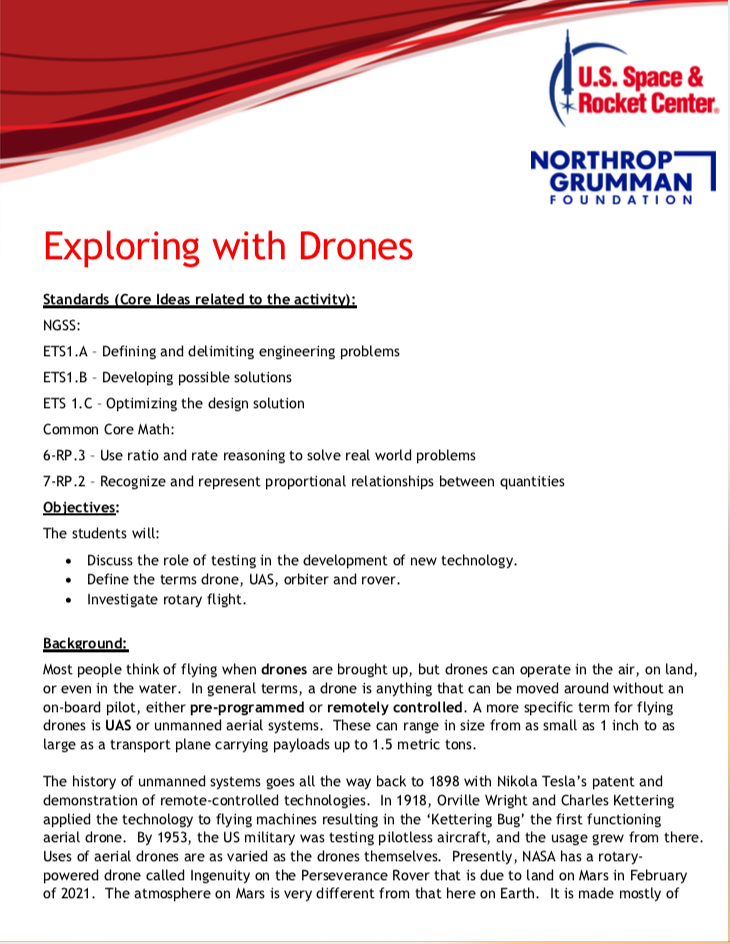Introduction
Welcome to the virtual outreach unit on Unmanned Systems from The U.S. Space and Rocket Center! We would like to thank the Northrop Grumman Foundation for their generosity in sponsoring the development of this unit. In this module you will find many resources that will help you provide an exciting and educational experience for your students. From introductory concepts, to career connections, in addition to activities and lesson plans, we hope you find everything you need for a successful teaching experience. Please see below for a detailed listing of the unit:
- Pre-Activity Resources – This document provides links to articles and videos that provide introductory information about drones; how they work and what they do.
- Interview with a Research Engineer – This video highlights the career and educational experiences of an engineer who works at the University of Alabama in Huntsville specializing in Unmanned Aircraft System Research.
- Activity – This document provides background information and the history of Unmanned Systems. It also focuses on one of the most exciting new drones, NASA’s Ingenuity. Ingenuity will be the first rotary craft to fly on another planet, and your students will investigate the craft as well as the flight.
- Continue Learning – This document includes links to help continue engagement. The links include videos, and articles, as well as additional activities.
Pre-Activity Resources
What is a Drone (FliteTest)
Subject Matter Expert
Activity
Most people think of flying when drones are brought up, but drones can operate in the air, on land, or even in the water. In general terms, a drone is anything that can be moved around without an on-board pilot, either pre-programmed or remotely controlled. A more specific term for flying drones is UAS or unmanned aerial systems. These can range in size from as small as 1 inch to as large as a transport plane carrying payloads up to 1.5 metric tons. The history of unmanned systems goes all the way back to 1898 with Nikola Tesla’s patent and demonstration of remote-controlled technologies. In 1918, Orville Wright and Charles Kettering applied the technology to flying machines resulting in the ‘Kettering Bug’ the first functioning aerial drone. By 1953, the US military was testing pilotless aircraft, and the usage grew from there. Uses of aerial drones are as varied as the drones themselves. Presently, NASA has a rotary-powered drone called Ingenuity on the Perseverance Rover that is due to land on Mars in February of 2021. The atmosphere on Mars is very different from that here on Earth. It is made mostly of carbon dioxide and is extremely thin, so this experiment will tell NASA whether or not powered flight on Mars is possible. Download "Drones" activity (pdf)
This curriculum is made possible by the generous support of the

Continue Learning
Four Forces of Flight with Paper Airplanes (U.S. Space & Rocket Center)
10 TINY Micro Robots and Nano Drones (DailyTop20s)
Meet the dazzling flying machines of the future | Raffaello D'Andrea (TED)
NASA's Mars 2020 Perseverance Rover Landing Animations (NASA Jet Propulsion Laboratory)


